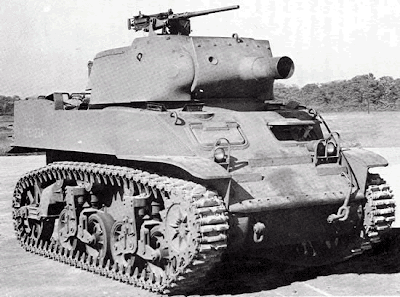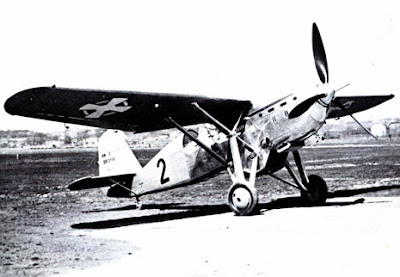Hawker Typhoon
Los orígenes del Typhon hay que buscarlos en la solicitud del Ministerio del Aire británico (F.18/37) de 1938 que solicitaba dos cazas interceptores fuertemente armados, uno equipado con motor Rolls-Royce Vulture identificado con la letra R y otro con motor Naiper Sabre designado con la letra N. Se construyeron ambos prototipos recibiendo el primero de ellos el nombre de Hawker Tornado pero debido a problemas con el motor Rolls-Royce el proyecto fue finalmente abandonado.
El prototipo con motor Sabre voló por primera vez el 24 de febrero de 1940 pero la caída de Francia en junio provocó que el programa se paralizase para centrarse en la producción del caza Hawker Hurricane y los trabajos no se reiniciaron hasta finales de año. La producción se encargó inicialmente a Gloster ya que tenía relación con la producción de Hawker. El primer Typhoon de serie voló el 26 de mayo de 1941 siendo muy parecido al veterano Hurricane aunque con una característico radiador ventral.
El Typhoon IA entró en servicio con la RAF en septiembre de 1941 viendo sus primeras acciones de combate en el verano del año siguiente. Sin embargo estas primeras experiencias resultaron decepcionantes, con una velocidad de ascenso lenta y frecuentes fallos en el motor. Todo ello provocó un rápido cambio de motor, el Sabre II, que ofrecía mejores prestaciones. En cuanto al armamento el Typhoon IA estaba armado con 12 ametralladoras Browning de 7´7 mm aunque pronto los cañones (4 cañones Hispano Mark II, estaba diseñado para disparar a través del buje de la hélice de ahí su gran longitud), bombas y lanzacohetes se convirtieron pronto en el armamento estándar de los Typhoon del 2º Tactical Air Force. Pronto enjambres de Typhoon campaban a sus anchas por territorio ocupado causando graves daños a las unidades alemanas en tierra. El tráfico ferroviario se convirtió también en objetivo de estos aparatos destruyendo 150 de ellos al mes. Los medios rodados alemanes fueron los que más sufrieron de sus ataques, engordándose muchas veces las bajas causadas en los medios acorazados alemanes.

Sin embargo la silueta del Typhoon resultaba muy similar a la del Focke Wulf Fw 190 y por ello muchos fueron derribados por el fuego amigo. Durante el día D los Typhoon se dedicaron a atacar las estaciones de radar alemanas y el tráfico rodado, de hecho, el propio vehículo de Rommel fue atacado resultando herido en la acción. En octubre de 1944 una gran formación de Typhoon fue enviada a atacar el Cuartel General del 15º Armee alemán en Dodrecht (Holanda), en el ataque resultaron muertos 2 generales y 70 oficiales.
Desde 1943 los Typhoon estaban inmersos en misiones de ataque al suelo operando sobre territorio enemigo y algunos de ellos cayeron en sus manos. El primer Typhoon que voló con la Luftwaffe fue el EJ956 SA-I del 486º Sqn. (NZ). El 23 de marzo de 1943 dos de estos aparatos (F/O Smith y F/S Mawson) realizaban una misión Rhubarb cruzando la costa francesa a baja altitud.
Poco después el Typhoon de Mawson fue alcanzado por la flak teniendo que efectuar un aterrizaje de emergencia cerca de Cany-Barville siendo capturado antes de que pudiera ser destruido. El aparato fue reparado volando en el
Zirkus Rosarios (T9+GK). El 14 de febrero de 1944 otro Typhoon (JP548 del 174º Sqn.) fue capturado volando también con la mencionada unidad alemana tras sufrir un fallo en el motor cerca de Marigny, Francia. El piloto, F/O Proddow, logró huir y no ser capturado. Finalmente este Typhoon se estrelló en Reinsehlen el 29 de julio de 1944 matando a su piloto, el
Feldwebel Gold. Un tercer Typhoon voló con la Luftwaffe, posiblemente del 1º Sqn.
En total se fabricaron 3.330 Typhoon pero a finales de 1945 ya no quedaba ninguno en servicio con la RAF. Un lote de 60 de ellos fueron destinados al reconocimiento armados tan solo con dos cañones de 20 mm y cámaras fotográficas.
amento estandart del Typhoon debido a problemas con el motor
Fuentes:
DARLOW, S. “Victory Fighters: The Veterans' Story” Bounty Books, 2005
SHORES, D. “Second Tactical Air Force Volume One. Spartan to Normandy, June 1943 to June 1944” Ian Allan, 2004
SHORES, D. “Second Tactical Air Force Volume One. Spartan to Normandy, June 1943 to June 1944” Ian Allan, 2004
THOMAS, C. “Hawker Typhoon” Hall Park Books, 2000
THOMAS, C. “Typhoon and Tempest Aces of World War 2” Osprey, 1999
“Pilot's Notes for Typhoon Marks IA and IB; Sabre II or IIA engine (2nd edition)” : Crecy Publications, 2004
English version
The origins of Typhon must be sought in the application of the British Air Ministry (F.18/37), 1938 to send two heavily armed interceptors, one equipped with Rolls-Royce Vulture engine using the letter R and a motor Naiper Sabre designated by the letter N. Both prototypes were built to receive the first of them the name of Hawker Tornado but due to problems with the Rolls-Royce the project was eventually abandoned.

The Sabre-powered prototype first flew on February 24, 1940 but the fall of France in June caused paralyze the program to focus on the Hawker Hurricane fighter production and jobs were not resumed until later this year. Production was initially commissioned as Gloster was related to the production of Hawker. The first series Typhoon flew on May 26, 1941 being very similar to Hurricane veteran but with a characteristic ventral radiator.
The IA Typhoon entered service with the RAF in September 1941 saw its first combat action in the summer of next year. However, these early experiences were disappointing, with a slow rate of ascent and frequent engine failure. This caused a rapid change of engine, the Sabre II, which offered better performance. As for the Typhoon weapons IA was armed with 12 mm machine guns Browning 7'7 but soon the guns (4 guns Hispano Mark II, was designed to fire through the propeller hub hence its great length), bombs and rocket launchers soon became the standard armament of the 2nd Tactical Typhoon Air Force. Soon swarms of Typhoon reigned unchecked in occupied territory causing severe damage to the German units on the ground. Rail traffic also became the target of these devices destroying 150 of them per month. The German media were shot suffered most of their attacks, often fattened casualties from German battleships in the media.
However, the shape of Typhoon was very similar to the Focke Wulf Fw 190 and so many were shot down by friendly fire. During the day the Typhoon D turned to attack the German radar stations and road traffic, in fact, the car itself was attacked Rommel was wounded in action. In October 1944 a formation of Typhoon was sent to attack the headquarters of the German 15th Armee Dodrecht (Holland), the attack killed two generals and 70 officers.
Since 1943 the Typhoon were engaged in ground attack missions over enemy territory and operating some of them fell into their hands. The first Typhoon flew with the Luftwaffe was EJ956 SA-I of 486° Sqn. (NZ). On March 23, 1943 two of these devices (F/O Smith and F/S Mawson) performed a Rhubarb mission crossing the French coast at low altitude.
Shortly after the Mawson's Typhoon was hit by flak having to make an emergency landing near Cany-Barville being caught before he could be destroyed. The aircraft was flying in the Zirkus Rosaries repaired (T9+GK). On February 14, 1944 another Typhoon (JP548 of 174° Sqn.) Was also caught flying with that German unity after suffering engine failure near Marigny, France. The pilot, F/O Proddow, managed to escape and avoid capture. Finally this Reinsehlen Typhoon crashed on July 29, 1944 killing its pilot, Feldwebel Gold. A third Typhoon flew with the Luftwaffe, possibly from 1 Sqn.
In total 3,330 were built Typhoon but in late 1945 and none remained in service with the RAF. A batch of 60 of them were intended for reconnaissance armed only with two 20 mm guns and cameras.
Sources:
DARLOW, S. “Victory Fighters: The Veterans' Story” Bounty Books, 2005
SHORES, D. “Second Tactical Air Force Volume One. Spartan to Normandy, June 1943 to June 1944” Ian Allan, 2004
SHORES, D. “Second Tactical Air Force Volume One. Spartan to Normandy, June 1943 to June 1944” Ian Allan, 2004
THOMAS, C. “Hawker Typhoon” Hall Park Books, 2000
THOMAS, C. “Typhoon and Tempest Aces of World War 2” Osprey, 1999
“Pilot's Notes for Typhoon Marks IA and IB; Sabre II or IIA engine (2nd edition)” : Crecy Publications, 2004









































